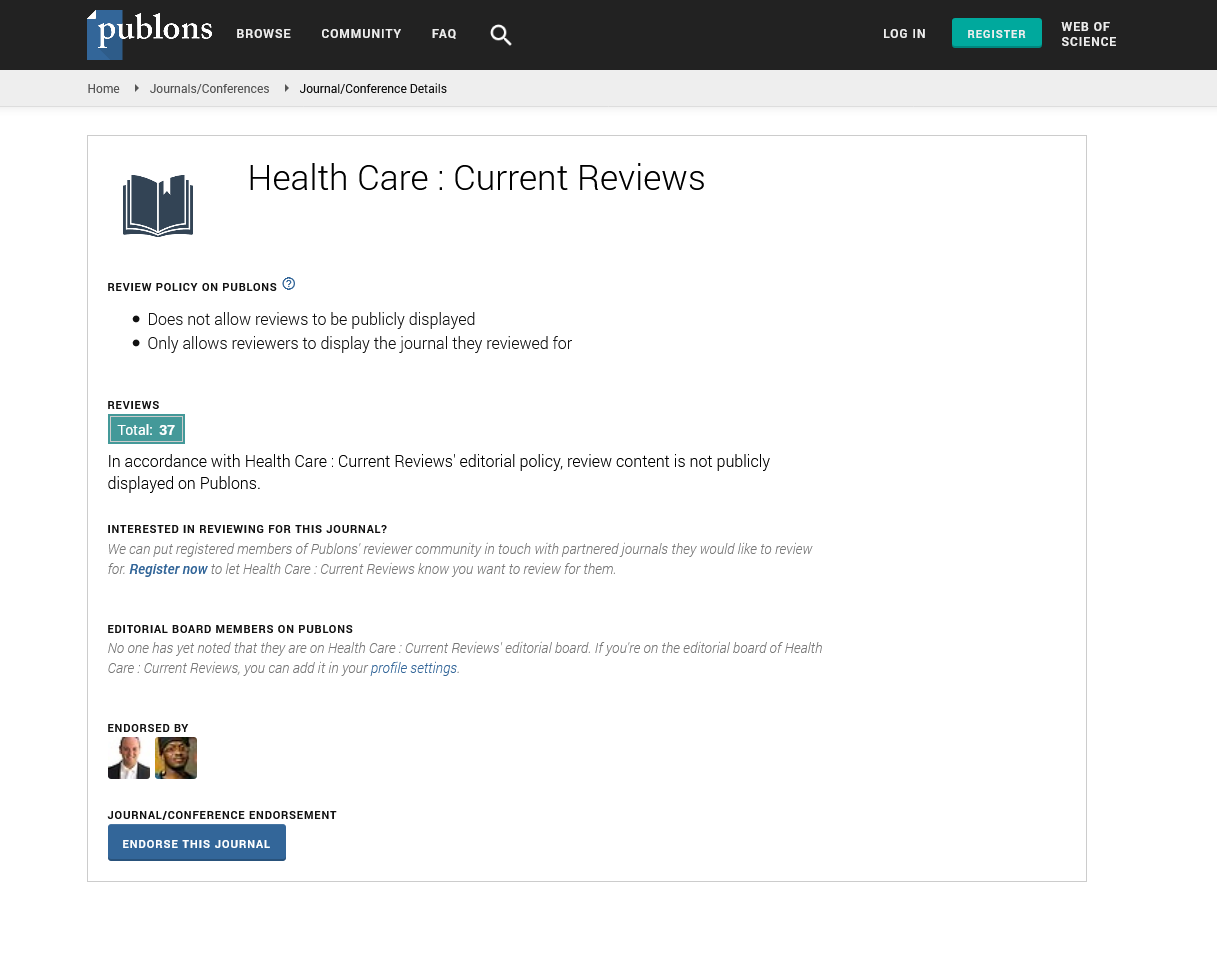Indexed In
- Open J Gate
- Academic Keys
- RefSeek
- Hamdard University
- EBSCO A-Z
- Publons
- Geneva Foundation for Medical Education and Research
- Google Scholar
Useful Links
Share This Page
Journal Flyer

Open Access Journals
- Agri and Aquaculture
- Biochemistry
- Bioinformatics & Systems Biology
- Business & Management
- Chemistry
- Clinical Sciences
- Engineering
- Food & Nutrition
- General Science
- Genetics & Molecular Biology
- Immunology & Microbiology
- Medical Sciences
- Neuroscience & Psychology
- Nursing & Health Care
- Pharmaceutical Sciences
Institutional delivery and its associated factors: A cross-sectional community-based study in Kavre district, Nepal
Joint Event on 3rd International Conference on Pediatric Nursing and Healthcare & 3rd International Conference on Perinatal Nursing and Adolescent Psychiatry
September 21-22, 2018 | Vancouver, Canada
Sushila Shrestha and Geeta Kamal Shrestha
Kathmandu University School of Medical Sciences, Nepal
Posters & Accepted Abstracts: Health Care Current Reviews
Abstract:
Introduction: Health facility delivery is considered a critical strategy to improve maternal health. The Government of Nepal is promoting institutional delivery through different incentive programmes and the establishment of birthing centers. The purpose of this study was to identify utilization of institutional delivery and its associated factors. Methodology & Theoretical Orientation: A descriptive cross-sectional study was carried out among the mothers of under-five children in Dhungkharka, Kavre District, Nepal. A pre-tested questionnaire was administered to 170 mothers between 15-45 years of age group. The household survey was done by using purposive sampling technique and face to face interview technique was used to collect the data from 1st July to 30th December 2014. Data were analyzed using simple descriptive statistic with SPSS version 16. Association with institutional delivery was assessed by using chi-square test. Findings: Among the total participants, 90.0% of them had institutional delivery. The higher proportions of institutional delivery were found in both literate mothers (p=0.001) and literate husband (p=0.023). The proportion of institutional delivery among the mothers decided by their relatives(husband, father/mothers-in-law and other family members)for institutional delivery had a higher portion (p=0.048) of institutional delivery than participants who decide themselves. But the study was not able to find out the significant association between institutional delivery and age of mothers, husband???s occupation and number of children, number of ANC visits and distance to the nearest health facility for delivery. Conclusion & Significance: Utilization of institutional delivery was much higher than the national figure. Institutional delivery was associated with both the educational status of mothers and their husband. Decision made by husband, mother-in-law, father-in-law and other family members were also associated with institutional delivery. So, to increase institutional delivery, family members need to be encouraged for the safe motherhood programme.
Biography :
E-mail: sushshrestha@yahoo.com

